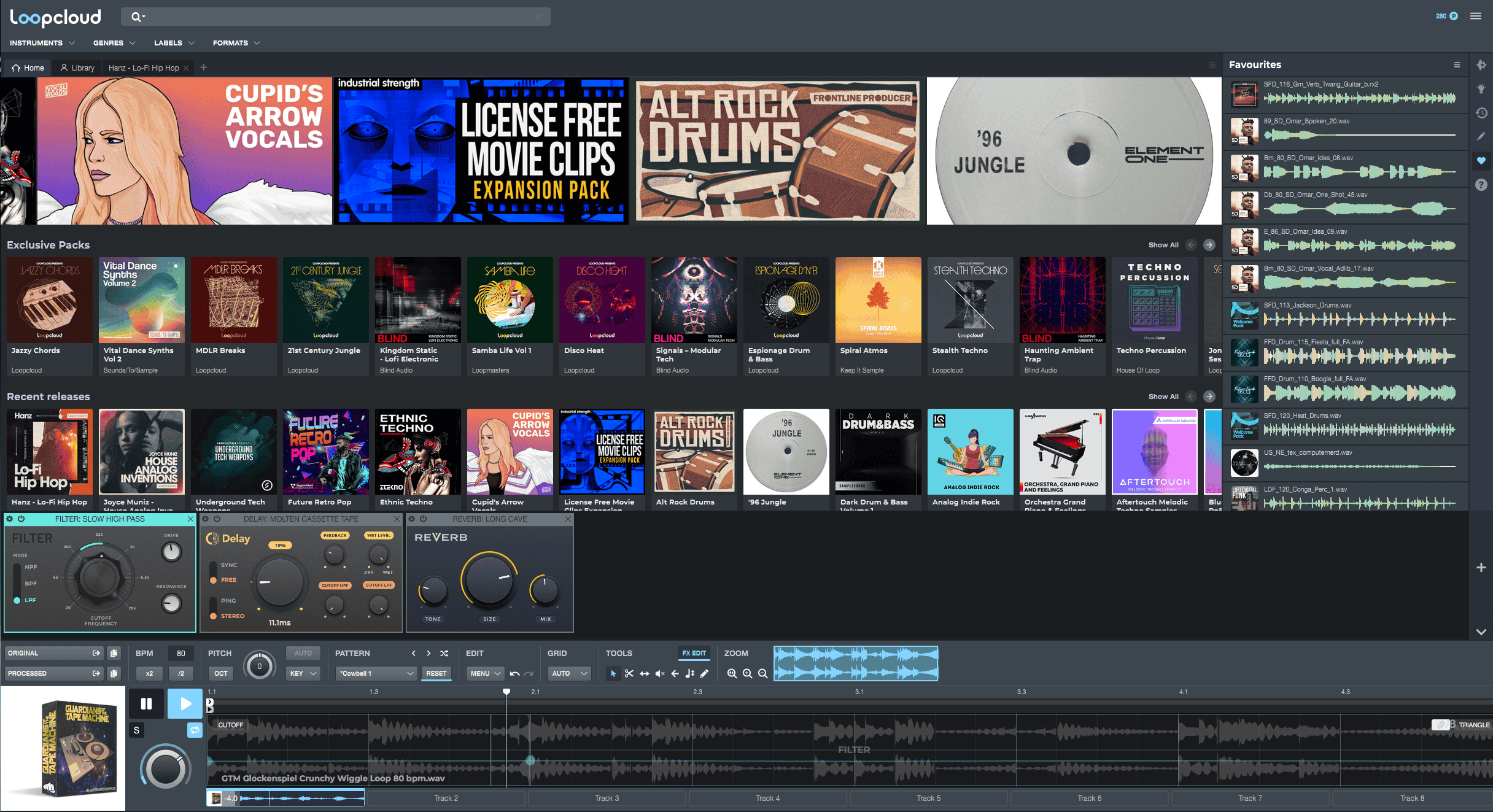Having access to the exact sounds you want, right at the moment you need them, enables producers to create their music more efficiently. Whether it’s that fat clap you wanna put on top of the snare in the bridge or that jazzy rhodes loop to get you going, with a sample on demand service it’s all right there at your fingertips.
Loopcloud and Splice are two of the biggest sample on demand services. And although they seem similar at first sight, they are quite different in terms of workflow and overall concept. To give you a clearer picture of how the two differ from another, we will cover the three most important aspects to consider when chosing a samples on demand service in this Loopcloud vs Splice comparison.
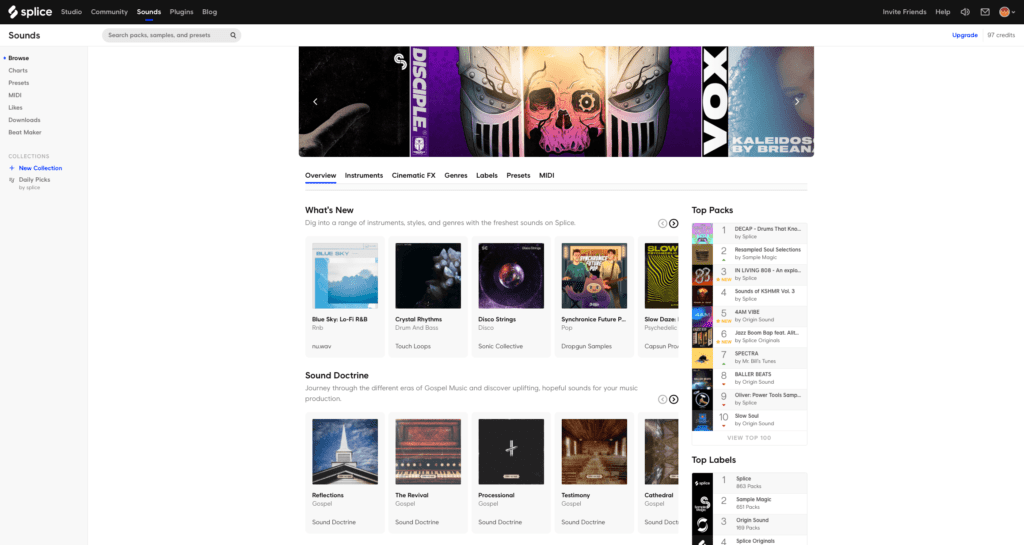
The aspects we are going to cover are:
- Workflow
- Sounds
- Pricing
But before we dive in, let’s have a brief look at the different concepts of Loopcloud and Splice, as both include more than just samples on demand subscriptions.
Splice – The Producers Hub
Splice is the pioneer of the samples on demand game. They were one of the first companies to offer a service of that kind. They also pioneered cloud storage for musical projects as well as a producer community, aimed to facilitate collaboration between artists. And not to forget, they were the first to offer rent-to-own plans for highly popular plugins and brands like Serum, iZotope and Arturia.
Loopcloud – The Samples Power House
Loopcloud is rather new in the sample subscription business. It is a service from Loopmasters, who in turn have a long history in the samples business and have become one of the biggest sample companies in the world over the last decade. Loopcloud started as a non subscription service and turned subscription with Loopcloud 5.
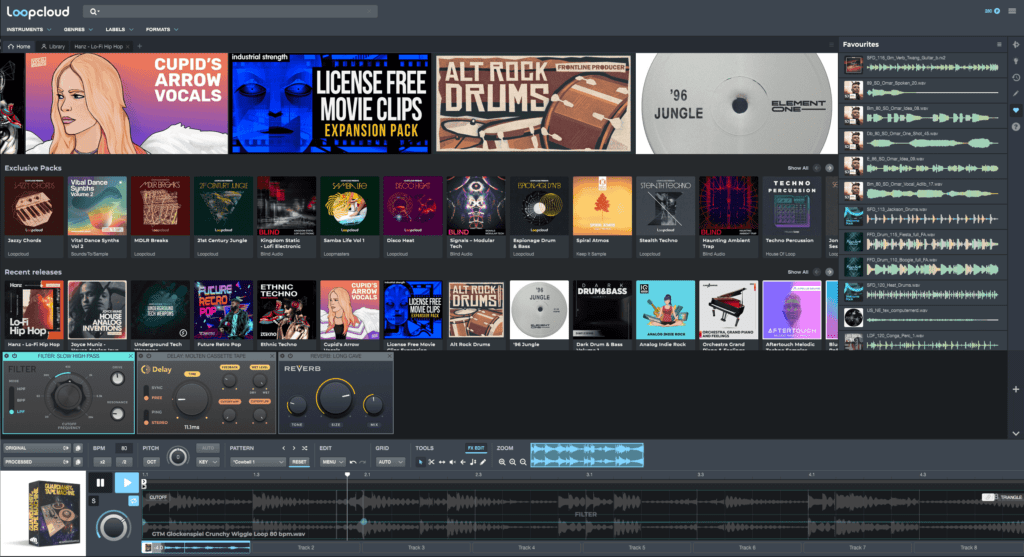
While Splice is more of a producers’ hub, offering a range of different services related to music production, Loopcloud is a straight forward sounds service, with a focus on a highly integrated and lighting fast production experience. At the center of Loopcloud is the powerful Loopcloud app which I’ll describe in more detail below.
Splice Workflow – Straightforward and Easy
The workflow in Splice is easy and straightforward. In the Splice app you can search sounds and filter them by criteria like tempo, key, instrument and genre. Once downloaded you can drag and drop them into your DAW. It’s as simple as that.
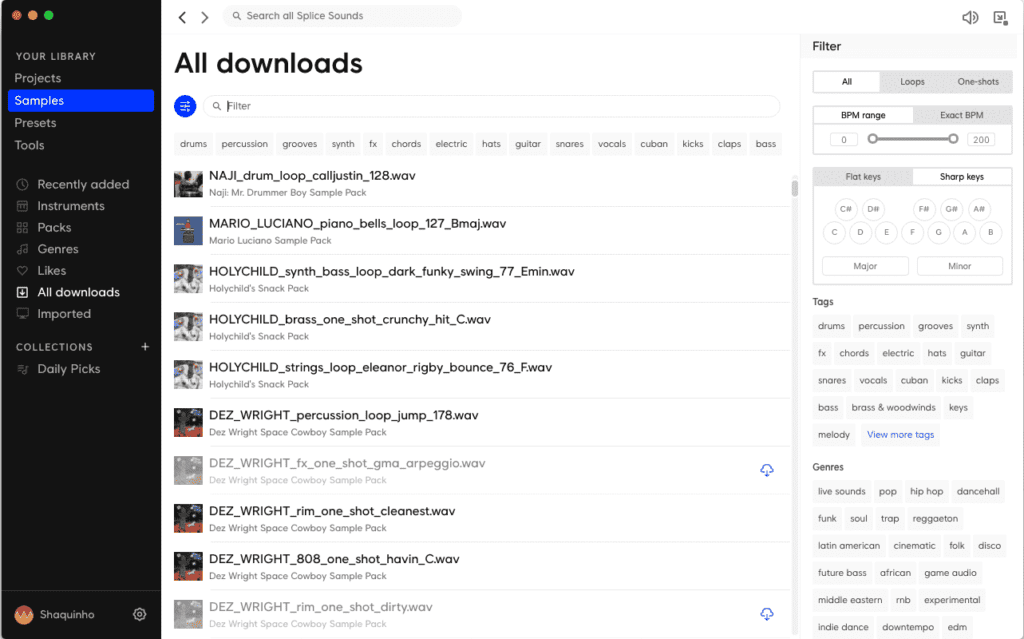
Loopcloud Workflow – Creative Playground
In Loopcloud you can search for samples in the same way as with Splice if you like. But their app is a lot more powerful, with a whole range of tools to shape and process a sample before you download it. It’s worth watching the short and clear tutorial videos on the Loopcloud website to get a grip of what Loopcloud is capable of.
At its heart the Loopcloud app is a sample manager on steroids which can be synchronized with your DAW via a dedicated Loopcloud plugin. In sync mode all samples are tempo and key synced automatically to your project. Browsing through the search results in context of the beat you’re working on makes the production process a lot slicker.
In Loopcloud Samples can also be edited and rearranged and effects like reverb, delay, filters, vinyl crackle etc. can be added before you even download a sound. You can also add up to 8 tracks of samples all within Loopcloud.
Did I mention that the Loopcloud app can also be used for your own sample collection? Simply drag your samples folder into the app. Your samples will then be automatically analyzed and categorized, which works astonishingly well. If you wish you can add or change tags by hand later.
And that’s still not all you get with Loopcloud. Apart from the app, there are two instrument plugins included, Loopcloud Drum and Loopcloud Play. These two sample player plugins load their content via Loopcloud – of course – and have a range of built in controls to shape the sound further. Loopcloud Drum even comes with a built in sequencer and mixer. So you could arrange and mix your drums all within Loopcloud.
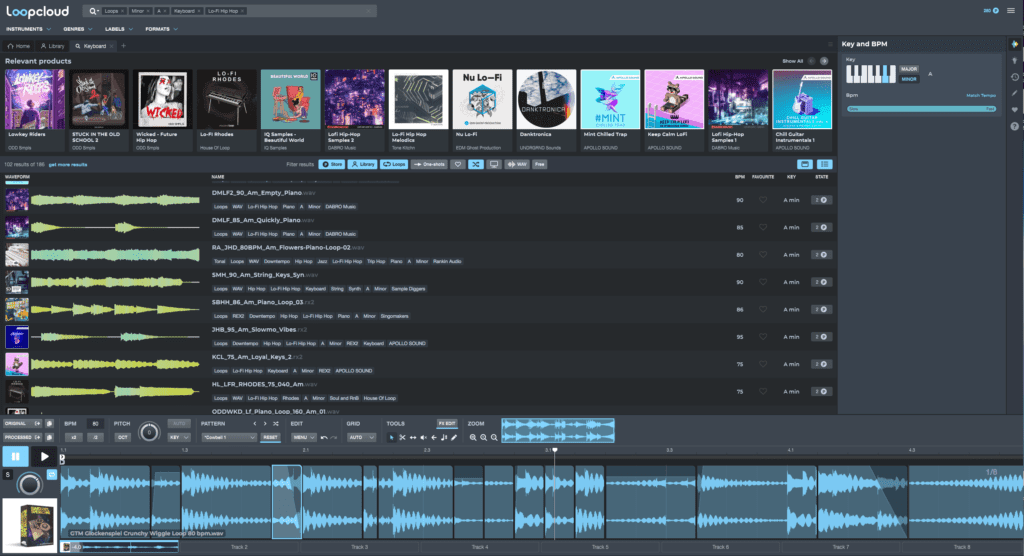
Sounds – Millions Of Samples To Choose From
Both Loopcloud and Splice offer millions of samples, which is probably more than you’ll ever need.
While the quality of the sounds provided by both companies is top-notch, they have still a bit of a different flavor. This is very subjective and you have to find out for yourself what suits your tastes better. I would say that if you are into Techno, House, Drum’n’Bass, Dubstep but also Reggae and Dub, Loopcloud wins. For HipHop, R’n’B and Trap, Splice might have a slightly better selection. But like I mentioned, this is very subjective and you best find out for yourself.
Pricing – Same Same But Different
Both Loopcloud and Splice have plans starting at $7.99 per month including 100 credits per month. But what do you get for one credit?
With Splice, it’s simple: for one credit you can download one sample, regardless of the length or which instrument.
With Loopcloud it’s a bit more complicated as samples can cost different amounts of credits. For one shots it’s one credit per sample, for loops it’s two, for a vocal sample you need to pay four credits.
But in turn you get a minimum of 10 free sounds per day from a library of over 10.000 files – depending on the plan even up to 50 free sounds per day -, which adds up to 300 sounds per month on top.
With both Loopcloud and Splice unused credits roll over to the next month so they never expire as long as you are subscribed. However, when you choose to cancel or pause your Splice subscription you lose any unused credits. Loopcloud freezes your credits when you cancel, so when you resubscribe your credits aren’t lost.
Loopcloud vs Splice – Which one should you choose?
Loopcloud is the big winner workflow and feature wise. A sample manager on steroids, Loopcloud enables you to listen to samples in context of a project. And that alone is a game changer. On top Loopcloud lets you edit samples and add effects on the fly before you even download them and comes with cool instrument plugins. And that is just the beginning, as the app is updated and new features are added frequently.
With Loopcloud you also get more sounds for your money.
Regarding the quality of the samples there is no winner. Both Loopcloud and Splice offer world-class samples and it comes down to your own personal preference and musical style.
Objectively Loopcloud wins the comparison clearly. So why should you even bother to give Splice a spin? Sounds and music are subjective and for some – subjective – reason, one service may inspire you more than the other.
I suggest you try both services for yourself. Both Loopcloud and Splice offer free trials and you can cancel both services any time.
Pros Loopcloud:
+ Millions of top sounds
+ Workflow
+ Features
+ Plugins
+ Price-Performance Ratio
Cons Loopcloud:
– Pricing a bit confusing
Pros Splice:
+ Millions of top sounds
+ Simple and clear workflow
+ Clear Pricing
Cons Splice:
– Features compared to Loopcloud
